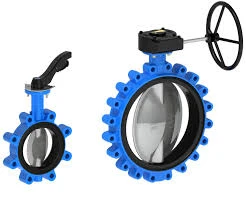10 月 . 01, 2024 02:05 Back to list
Ball Valve with Integrated Y Strainer for Efficient Fluid Control and Filtration
Ball Valve with Y Strainer An Overview
In modern industrial systems, efficient fluid management is vital for maintaining operational integrity and maximizing productivity. Among the various components used in fluid handling, the combination of a ball valve with a Y strainer has gained prominence for its functional advantages. This article delves into the importance, functionality, and applications of a ball valve paired with a Y strainer.
Understanding the Components
Ball Valve A ball valve is a type of quarter-turn valve that uses a spherical disc to control the flow of liquids and gases. The design allows for both quick shut-off and full flow when fully opened. Typically constructed from durable materials such as stainless steel, brass, or plastic, ball valves are known for their reliability and longevity. Their simple operation makes them suitable for a myriad of applications, from residential plumbing to sophisticated industrial processes.
Y Strainer A Y strainer is a device designed to filter out debris and contaminants from liquids or gases flowing through pipelines. Its Y-shaped body allows for easy installation, typically inline with the piping. Strainers feature a mesh filter, which can vary in size depending on the application, effectively preventing unwanted particles that could cause damage to downstream equipment. This preemptive filtration ensures smooth operation and longevity of critical machinery.
The Synergy of Ball Valve and Y Strainer
When a ball valve is combined with a Y strainer, the benefits of both are leveraged to enhance system performance. The ball valve allows for rapid operation, granting users precise control over flow rates and system isolation. Meanwhile, the Y strainer takes on the responsibility of protecting the system from solid intrusions.
1. Protection of Equipment One of the primary functions of a Y strainer is to eliminate solids that can damage pumps, valves, and other equipment. When integrated with a ball valve, it ensures that any particles filtered from the flow do not interfere with operational efficiency. This protective layer minimizes maintenance costs and extends the life of equipment.
2. Ease of Maintenance The combination of these two components is highly advantageous during system maintenance. The Y strainer can be serviced without needing to disrupt the ball valve's position. This practical characteristic is crucial as it reduces downtime and labor costs, ensuring that processes remain uninterrupted.
ball valve with y strainer

3. Space Efficiency Installing a ball valve with an integrated Y strainer can save valuable space in piping configurations. Instead of installing each component separately, the combined unit streamlines the design, making it more compact and easier to work with in confined environments.
Practical Applications
The ball valve with Y strainer configuration finds applications across various industries
- Water Treatment In water treatment facilities, these components work together to control flow rates and filter out debris before water is treated and distributed, ensuring high-quality output.
- Oil and Gas In upstream operations, these components help in managing flow and safeguarding equipment from particulate matter in crude oil and gas, facilitating efficient operation.
- HVAC Systems In heating, ventilation, and air conditioning systems, the ball valve and Y strainer arrangement helps maintain optimal flow while filtering any contaminants that could lead to system inefficiencies.
- Chemical Processing In chemical plants, this combination ensures that reactive and sometimes corrosive fluids are handled safely and efficiently while protecting sensitive equipment from contamination.
Conclusion
The ball valve with Y strainer configuration offers numerous benefits, including enhanced protection for downstream equipment, ease of maintenance, and space efficiency. As industries continue to prioritize operational reliability and efficiency, this combination will remain a popular choice in fluid management systems. By understanding the functionality and applications of these components, engineers and facility managers can make informed decisions that promote long-term success in their operations.
Share
-
Understanding the Differences Between Wafer Type Butterfly Valve and Lugged Butterfly ValveNewsOct.25,2024
-
The Efficiency of Wafer Type Butterfly Valve and Lugged Butterfly ValveNewsOct.25,2024
-
The Ultimate Guide to Industrial Swing Check Valve: Performance, Installation, and MaintenanceNewsOct.25,2024
-
Superior Performance with Industrial Swing Check Valve: The Essential Valve for Any SystemNewsOct.25,2024
-
Industrial Swing Check Valve: The Ideal Solution for Flow ControlNewsOct.25,2024
-
You Need to Know About Industrial Swing Check Valve: Functionality, Scope, and PerformanceNewsOct.25,2024